Garden of eatin' with native fruit trees
My latest publication, in the 'Missouri Conservationist.'
When I returned to Missouri in 2017 after 17 years away, one of the first things I did was sign up to get free copies of the Missouri Conservationist.
Published by the Missouri Department of Conservation, this award-winning publication is so good, I’ve read every issue since then, cover to cover. The articles are top-notch, whether that’s an intimate look at wolf spiders, a transparent analysis of our state-wide feral hog problem, or the former agency director’s heartwarming monthly essays. A picture is worth a thousand words, of course, so the celebrated photographers whose work illustrates the stories in vivid detail certainly deserve their praise.
I felt I knew the magazine intimately, so when I had an idea for an article, I pitched it to the editor, and she accepted. As a published author for 30+ years and a former editor myself who’s been many times on the receiving end of such pitches, I can tell you there really is something to knowing the publication you’re targeting for a pitch.
The topic was also one I knew well: using native fruit trees in the home landscape. Around the same time I subscribed to Missouri Conservationist, I also began a deep dive into learning everything I could about the native flora and fauna of the Midwestern U.S. I had gardened with natives in the Seattle area for many years, and I also edited the gardening section as deputy editor of Crosscut (now part of Cascade PBS). But I needed to learn a very different ecology here in the Midwest.
I loved every minute of this crash course as I taught myself by designing our quarter-acre garden in the process. In just four years, my husband and I earned a platinum award from the St. Louis Audubon Society’s Bring Conservation Home program. That’s passion, for ya.
With our garden design, I had focused from the outset on including native plants that humans can eat or use as herbal medicine. It’s a big topic, so for the Missouri Conservationist piece, I pitched them a story specifically about native fruit trees. In “Garden of Eatin,’’’ I highlight persimmons, wild plums, and pawpaws, with a few other honorable mentions. You can read it online for free, but for you Missourians, check out the April 2025 print edition of this stellar publication, as there my story is accompanied by gorgeous photos from the Missouri Department of Conservation’s noted photographers (digital version here).
Especially for Brunette Gardens members, here are links to even deeper dives on native fruit trees, as a great place to keep exploring after you’ve finished reading Garden of Eatin.’
The first is an introduction to the versatile uses for persimmon pulp, including a cookie recipe.
Podcast version (audio):
Below are persimmon-planting details, plus a peek at a unique edible vine fruit. Note it says fall, but spring is also a good time to plant trees and vines.
Audio.
A recipe for a tasty chutney using native plums.
A fun foraging piece by my entertaining husband, featuring serviceberries.
One of the aspects of the MC piece I’m most proud of is how I worked in some cool, relevant background on Laura Ingalls Wilder, who lived most of her life in Missouri, as I detail in this piece on visiting her homestead.
If the above links weren’t enough for you, you might also check out everything I’ve ever written for this Substack on the topic of gardening with natives.
I’ve also got you covered if you’d like to peruse a full list of all of my journalistic articles, interviews, and reporting, along with game- and book-publishing credits. I’m quite sure 😉 you’re all curious to know what I’ve done with my career when not a journalist. I came of age as a writer in a time period in which that has been a unique challenge, and the key to my survival has been to remain open and diverse in what I’m willing and able to write and edit (I’m especially looking at you, financial services reports…).
Thanks for bearing with me as I enjoy a rare moment when a garden writer’s labors—both in the garden and at the keyboard—bear fruit.



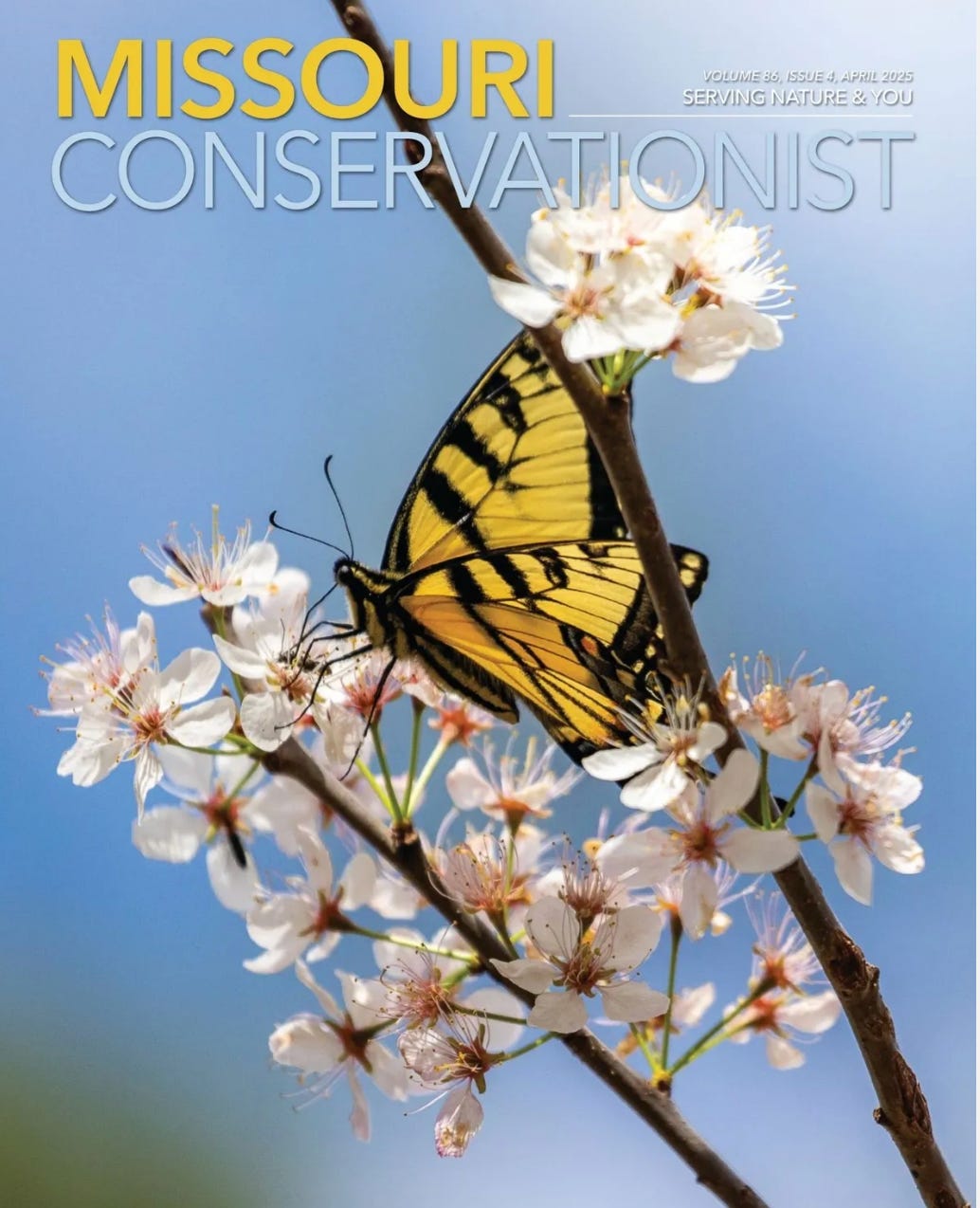
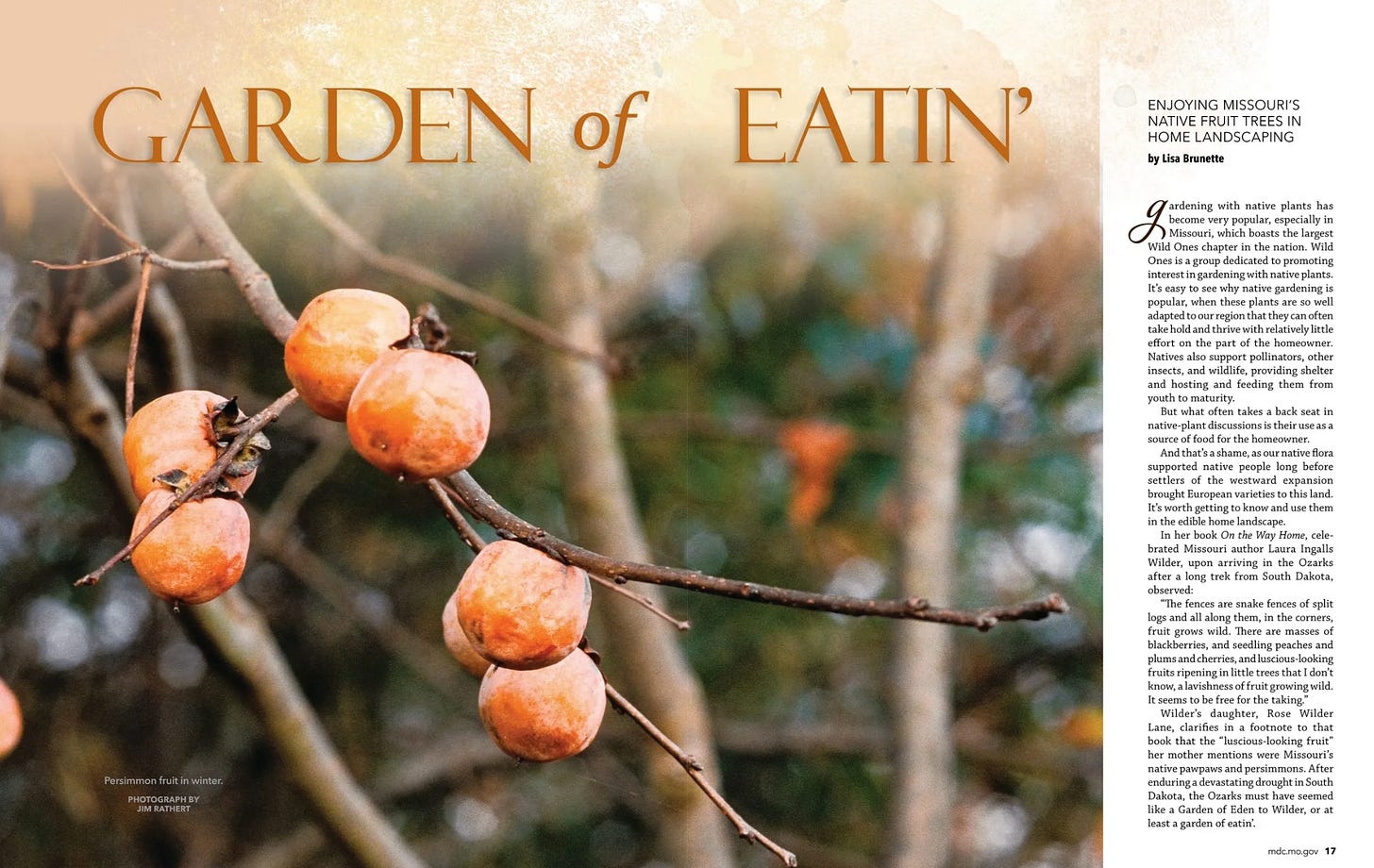
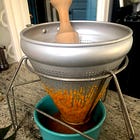
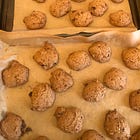
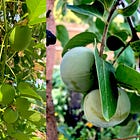
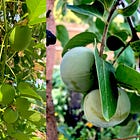
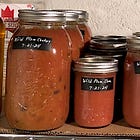
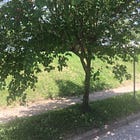
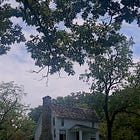
The MC editor, Angie Morfeld, shared this with me today:
"We have gotten some nice feedback on the issue.
From one reader:
I received my copy of the April 2025 Missouri Conservationist today and flipped through it.
I was very excited to see a picture of mulberries right in the front (Table of Contents)! With a promise of some good information? I’m in.
From another reader:
As a retired Missouri Rockwood School District life science teacher , this is the best teacher/student life science edition I have ever seen."
Congrats on your publication. There’s something so satisfying seeing your writing in print. Then you read it again and hope that there’s no errors. I do anyway, despite having reread it countless times. Your feedback was wonderful too!.